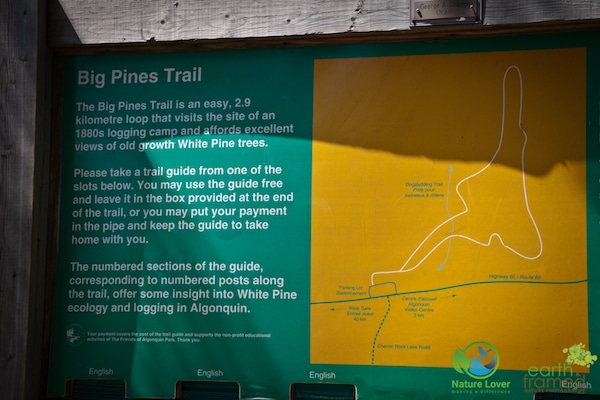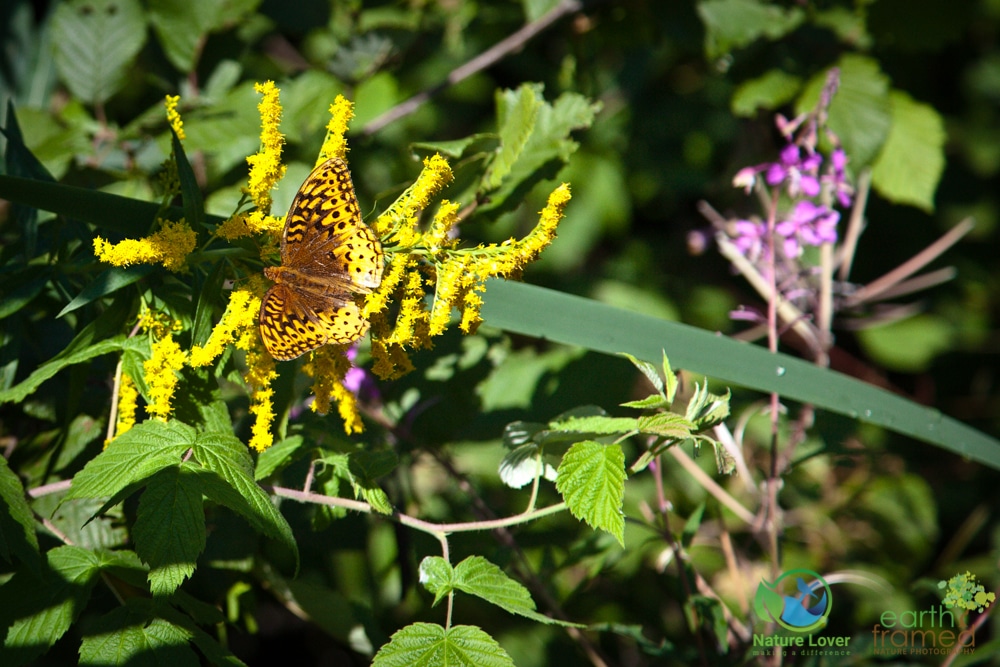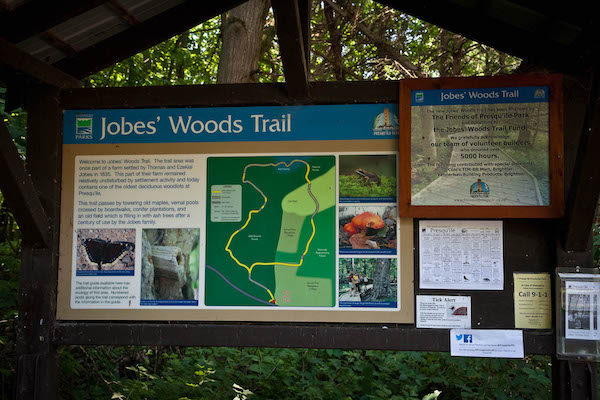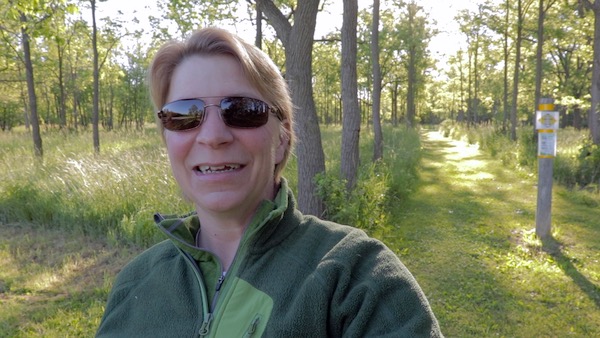Hiking the Big Pines Trail at Algonquin Provincial Park is always awe inspiring. Walking among the few giant White Pines that still thrive along this trail will leave you breathless. During the hike you’ll find remnants of logging from the 1880s and also about 75 enormous White Pines that survived due to the fact that they weren’t straight.
At the beginning of the trail we spotted a Great Spangled Fritillary butterfly enjoying the nectar from a goldenrod that was blooming in the sunlit entrance to the trail. Behind you might be able to spot Fireweed, the pink flower off to the right. 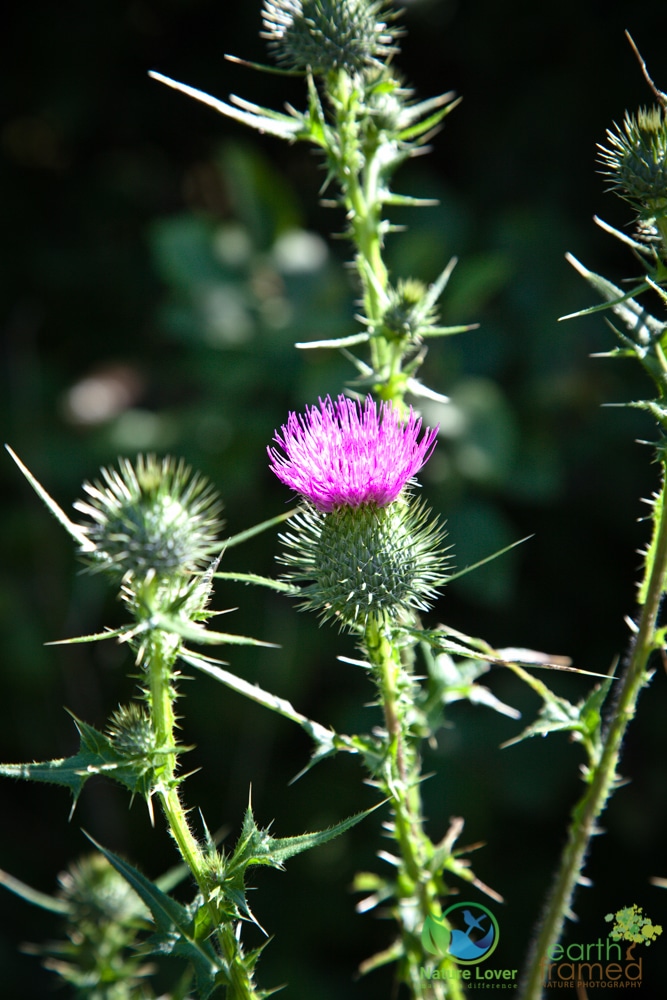
As always, we also find non-native species growing wherever habitat has been disturbed. Bull Thistle, also known as Common or Spear Thistle, is native to Europe and many parts of Asia. In North America, Africa and Australia it is considered to be very invasive.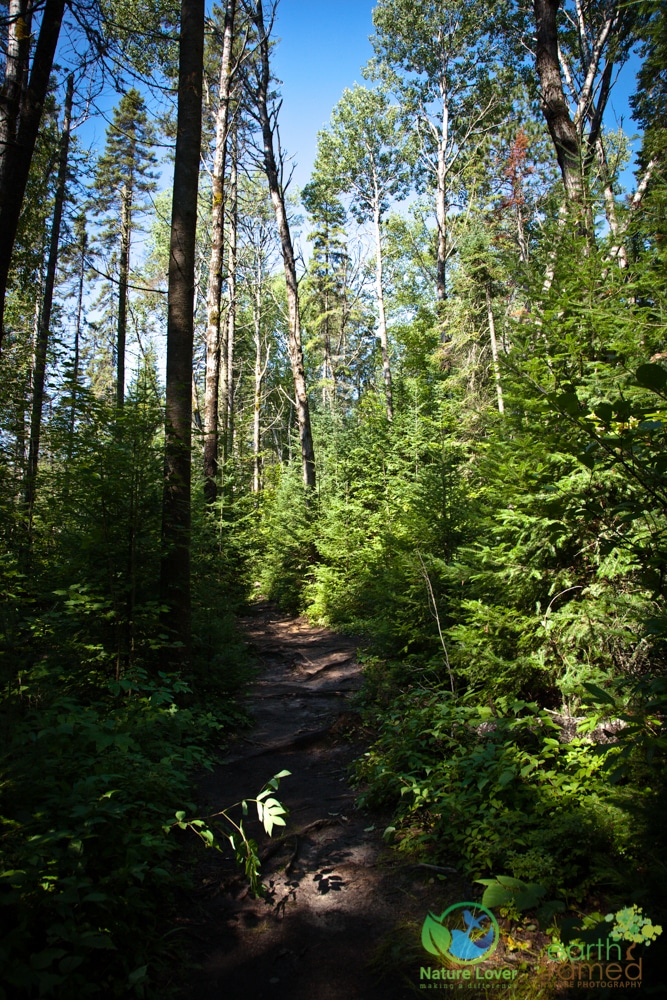
Along the narrow and winding trail we often look up to catch a glimpse of the large White Pines scattered throughout the area. 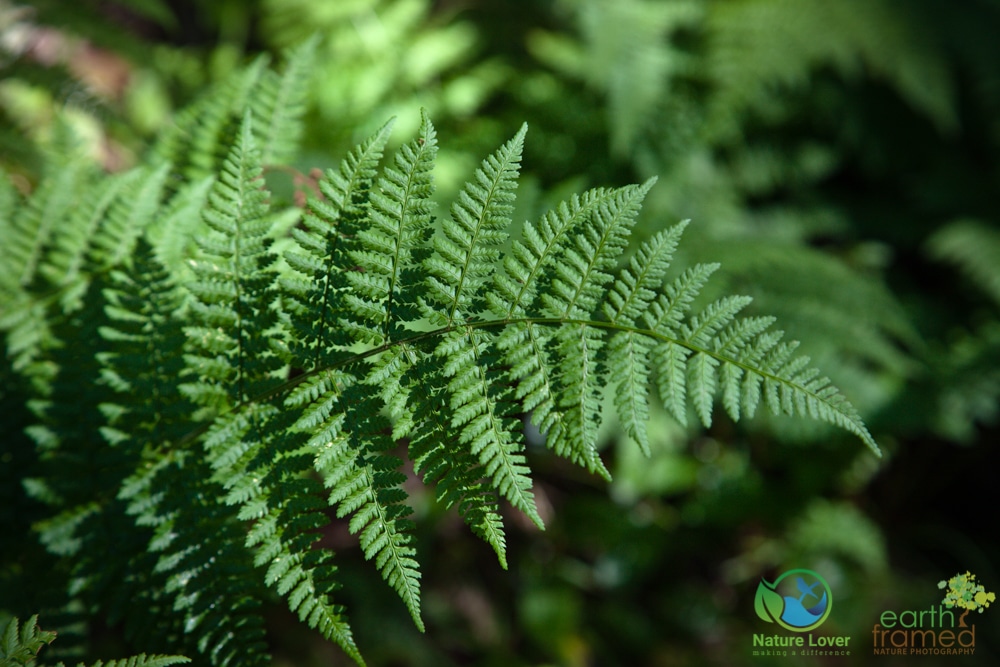
Like most areas in Algonquin Park, there are various fern species that can be found. Look for fern allies as well, like the horsetails and club-mosses.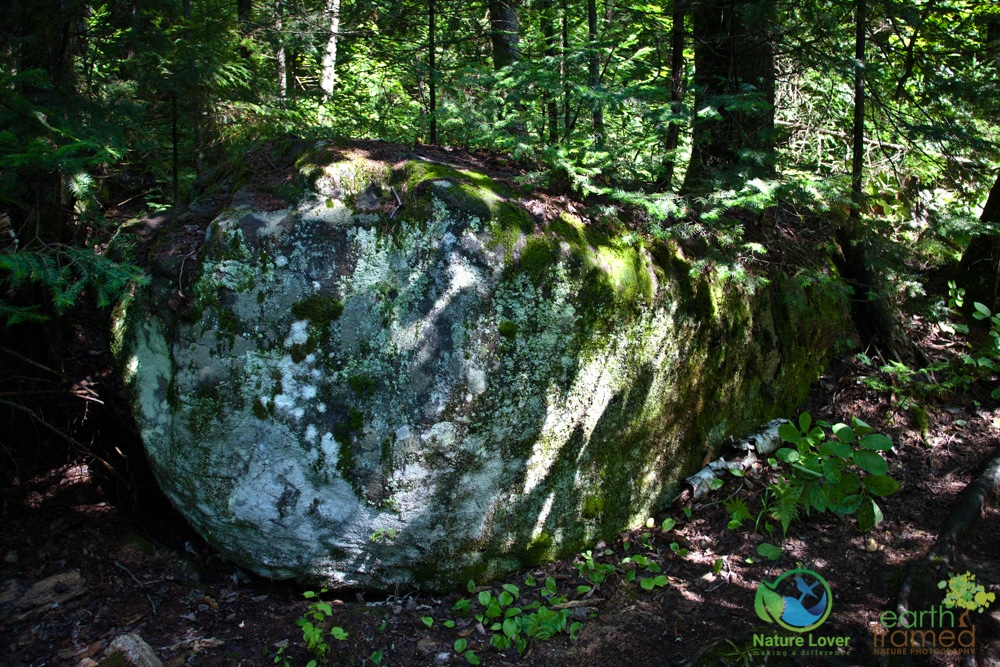
Large erratic boulders are covered with lichens, mosses, ferns and sometimes even trees.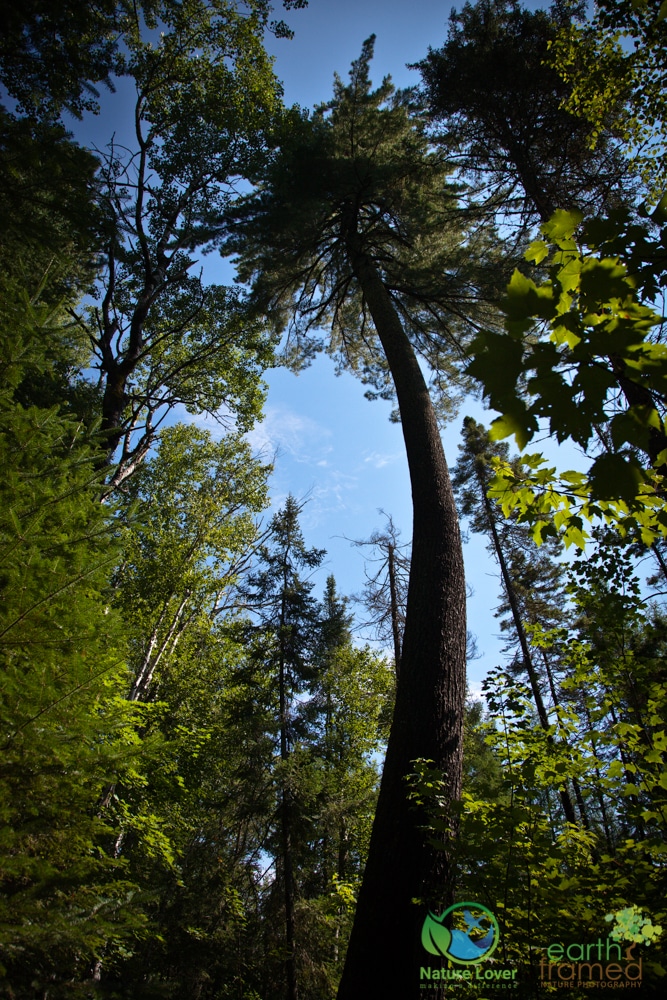
The ‘sweep’ or curve of the trunk of this White Pine is one of the reasons it still stands today. Loggers would only cut down the straight pines in order for them to be used for such things as large masts.
Common Polypody fernscan grow in rocky areas and hardwood or pine forests. 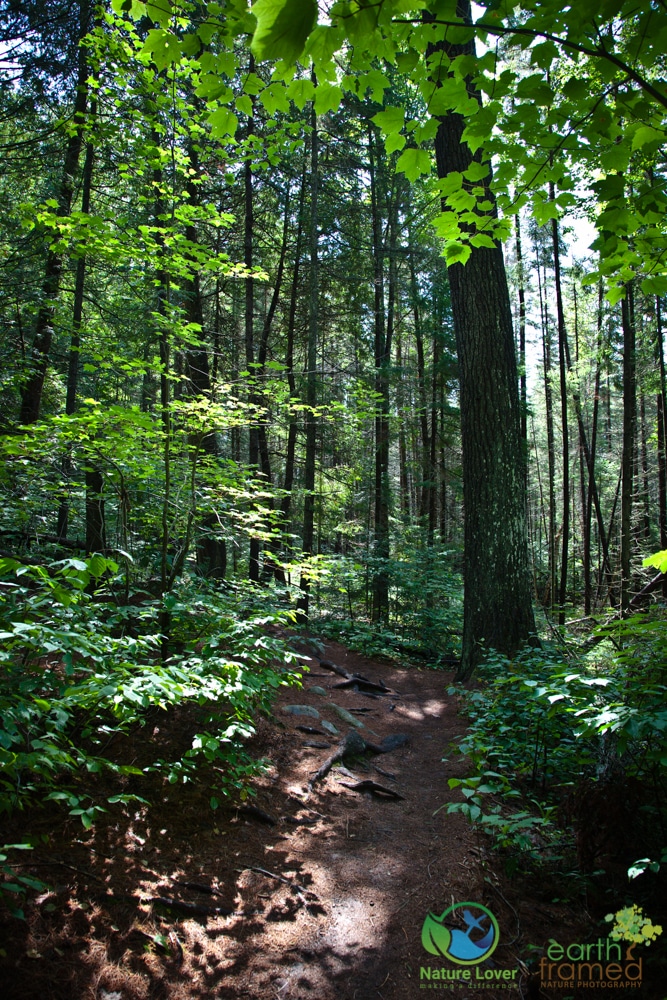
Here we can see a large White Pine surrounded by a variety of young trees, including maples.
Can you see the curve of the tree? It doesn’t seem that dramatic, but it was enough for the loggers to give it ‘a pass’.
These trees are huge compared to the surrounding species. Check out the size of them next to a person and dog. Not exactly a sequoia, but still magnificent.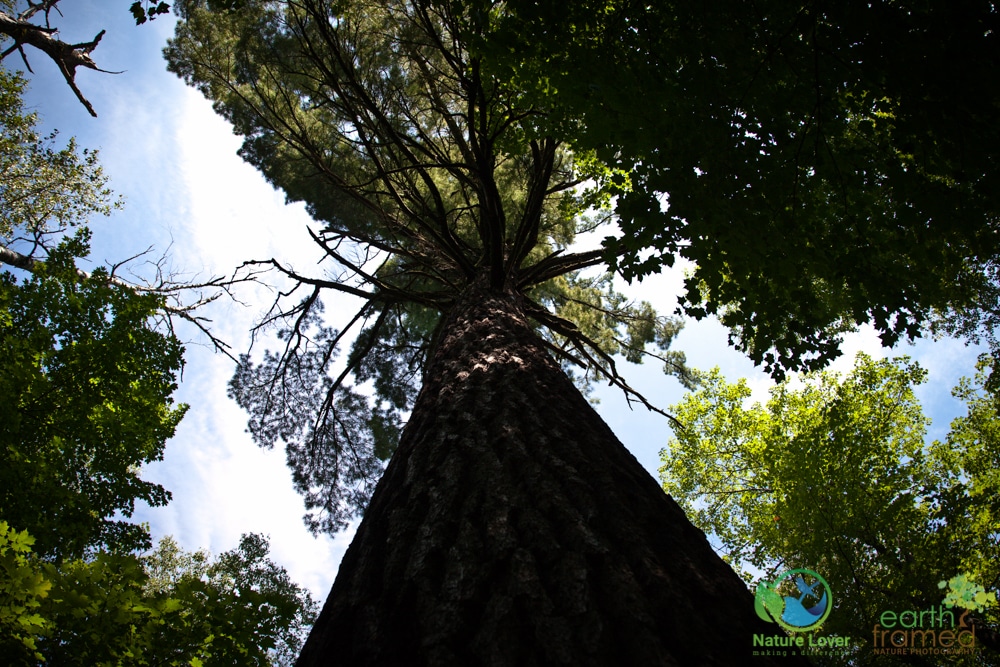
White pines grow very tall and are mostly branchless until almost the top. This was another reason why these trees where ideal back in the 1880’s. Did you know that these huge trees float? This allowed the loggers to transport them to mills via the waterways.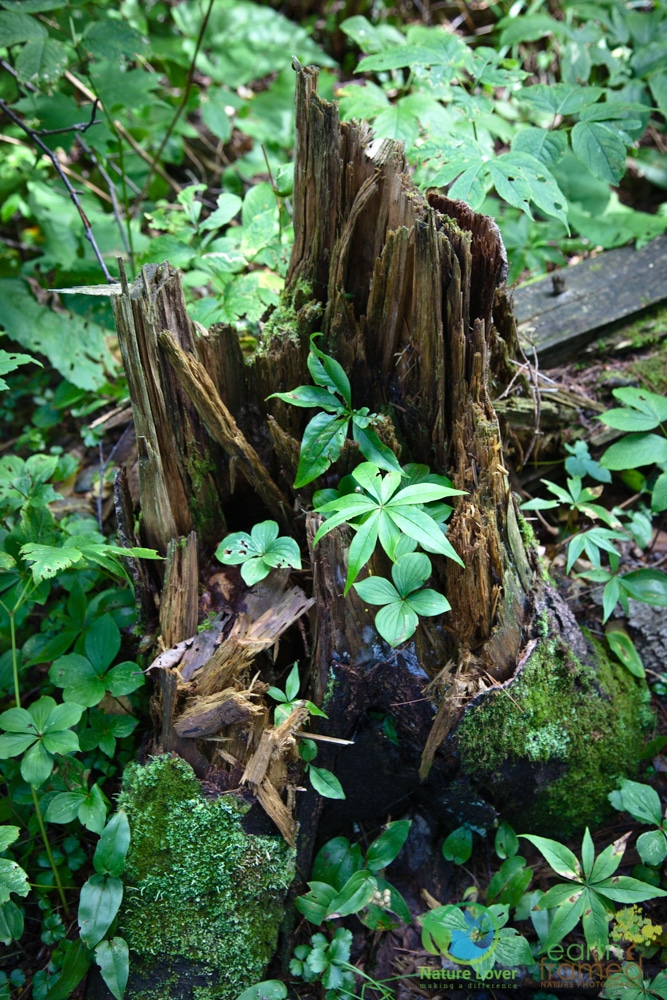
A decaying tree trunk makes the perfect base for all kinds of forest species. Above you can see moss, Bunchberry, Starflower and False Solomon’s Seal.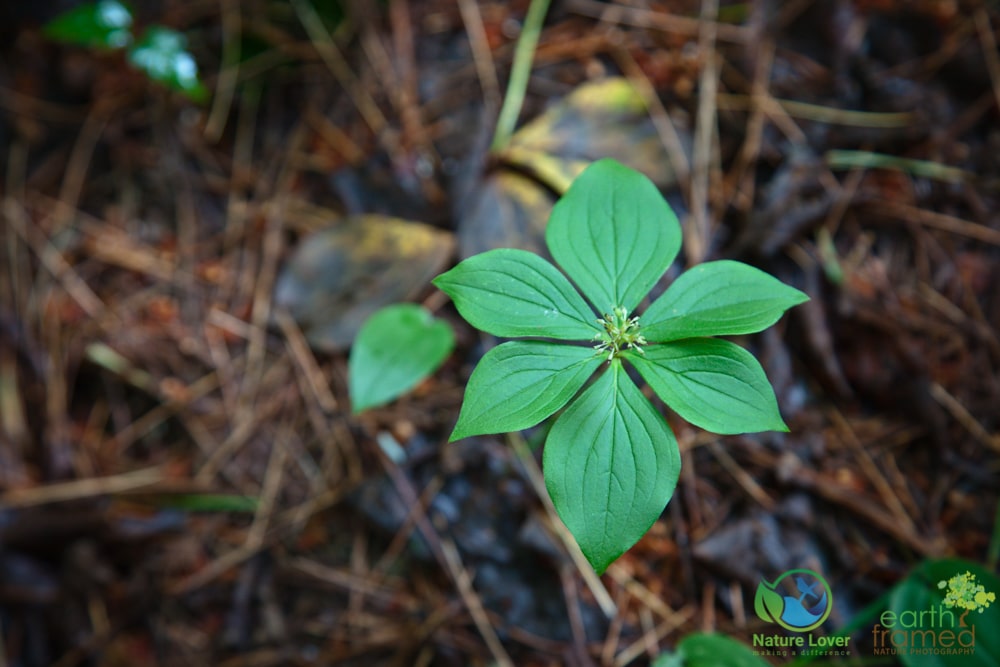
This Bunchberry has flowered and lost it’s fruit, but the leaves leave no doubt about its identification. White-tailed deer and Spruce Grouse both enjoy eating the leaves, flower and fruit of this native plant.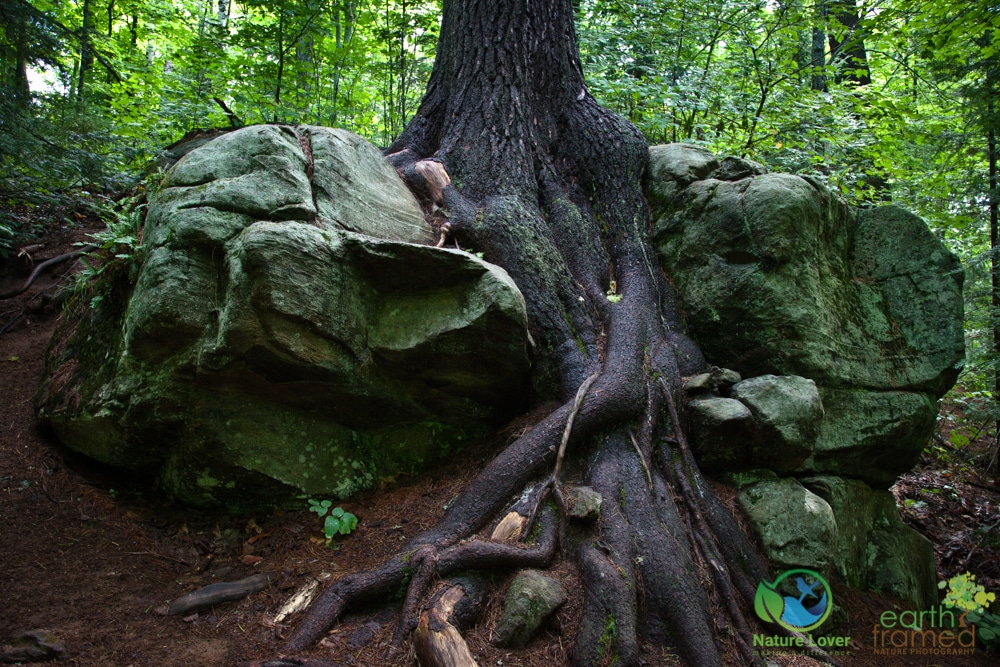
Trees will find a way to survive. This pine tree has grown on, through and around this huge Precambian boulder.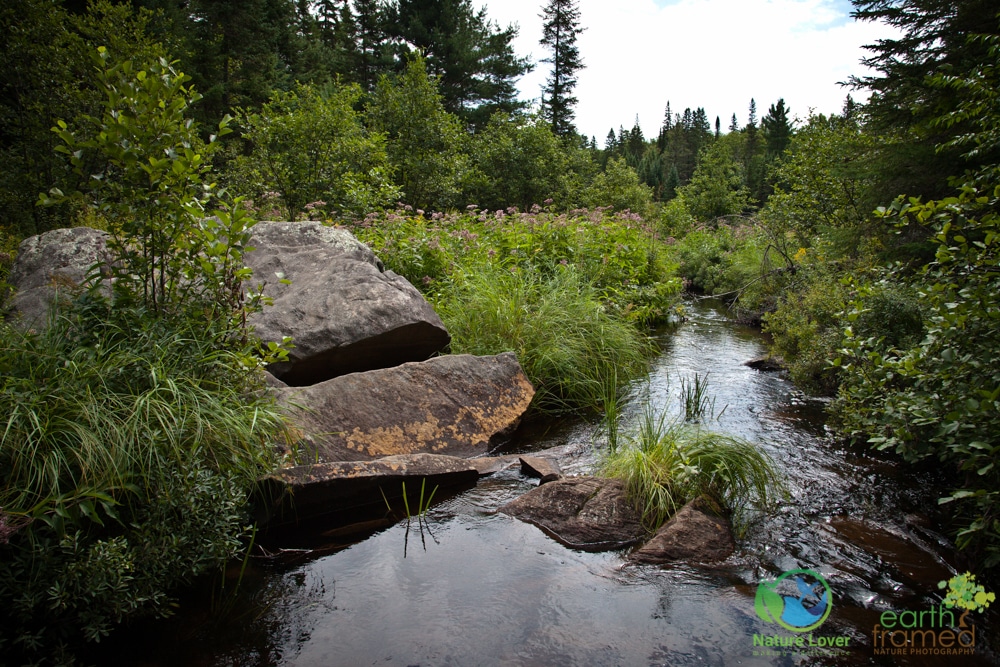
A small river runs along one edge of the trail. It appears to have been formed in the past by beaver dams. The babbling brook was clean and clear and made beautiful background ‘music’ as we sat and had our lunch.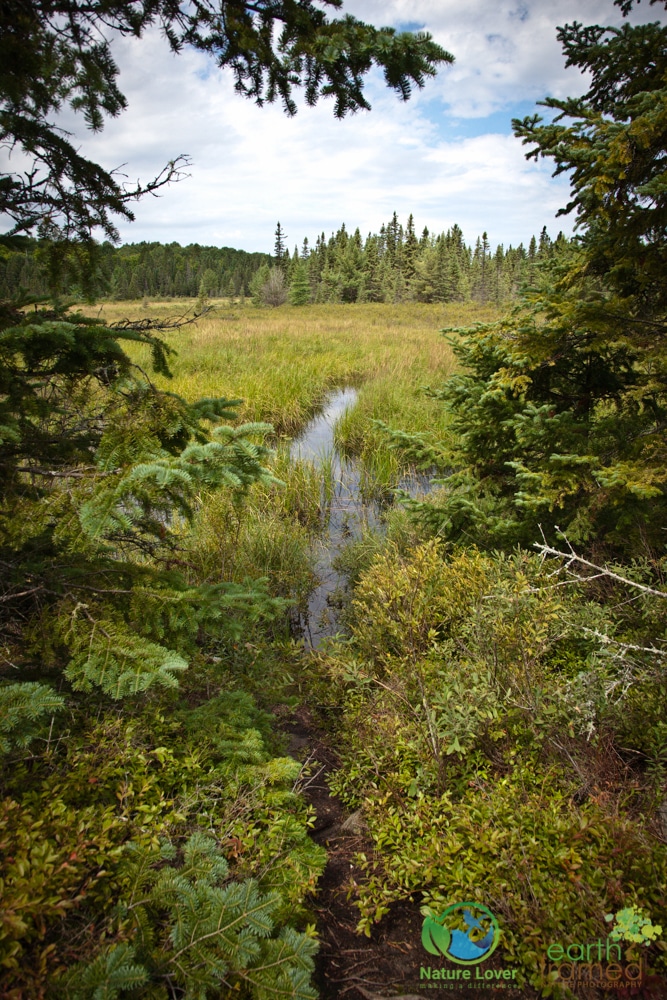
Just around the corner from the brook we found a beaver’s meadow with tell-tale signs of wildlife activity.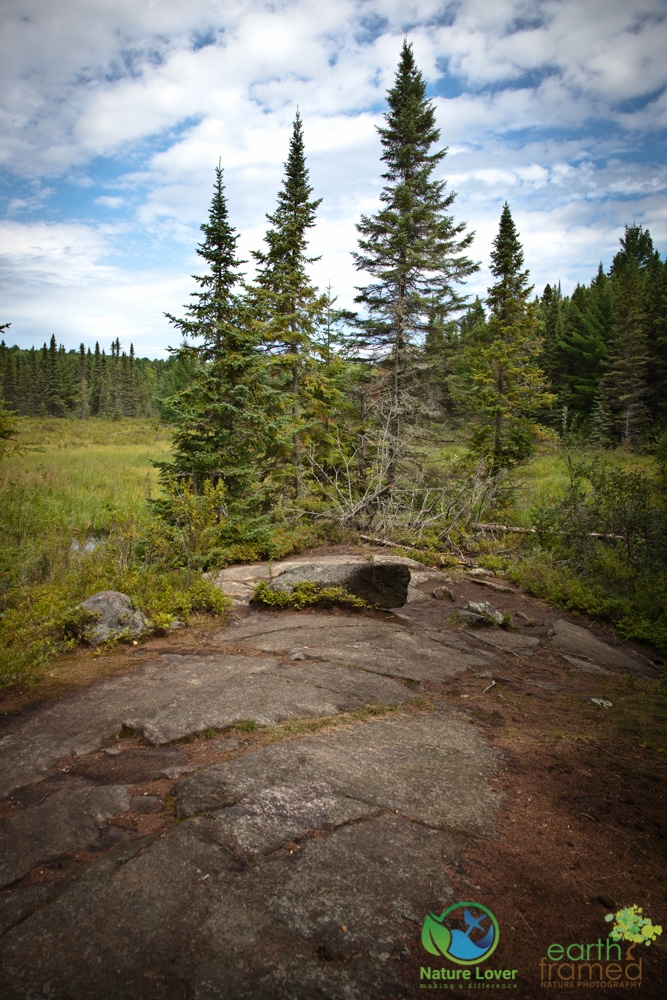
This is the view from the spot we enjoy to stop and have our lunches whenever we hike this trail. In our packs we carry our Thermorest inflatable seats to make the picnic even more enjoyable. There are a few benches in the area for those of you who prefer not to sit on the ground. 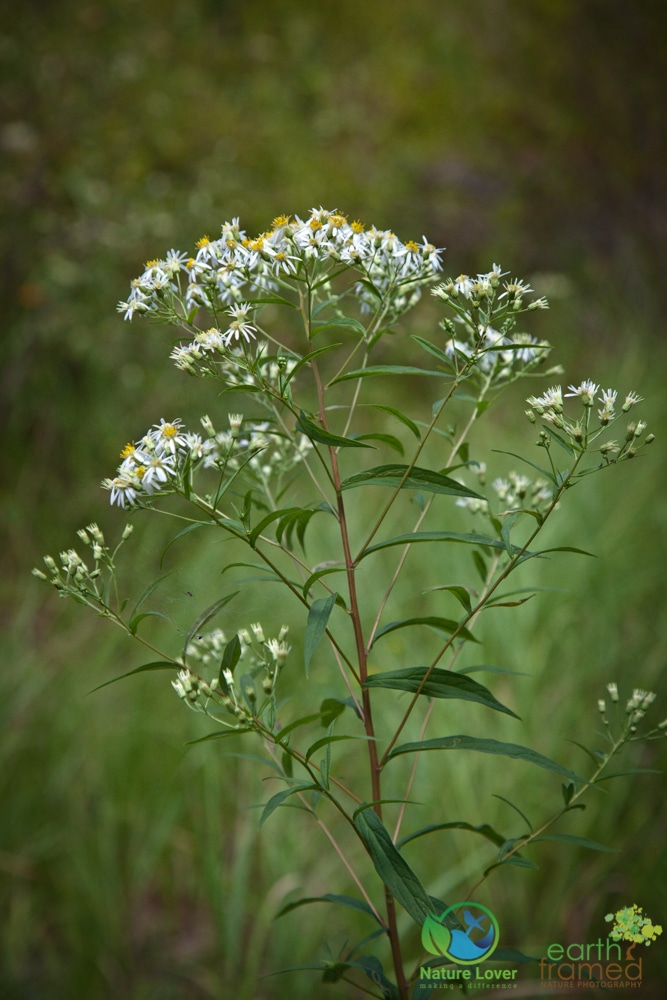
White asters were growing at the edge of the beaver meadow.
Big Pines Trail is a fairly easy 2.9 kilometre loop that offers hikers a look at about 75 White Pines that are about 226 years old. Pick up the trail guide to find out how the park knows that and many other fascinating facts about the ecology and history of this trail.


